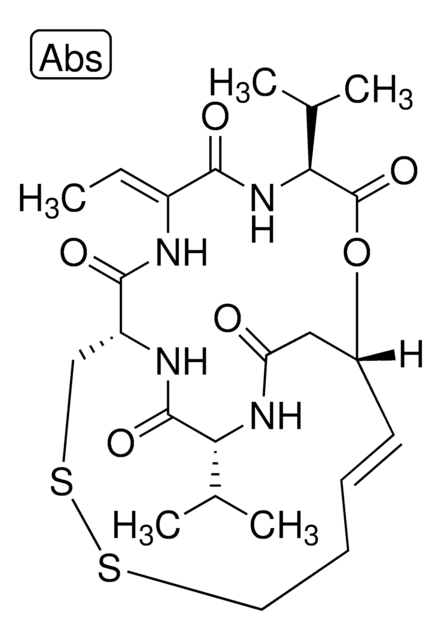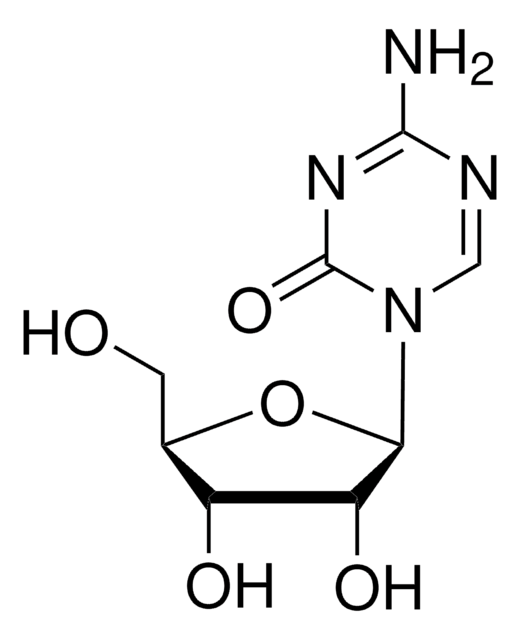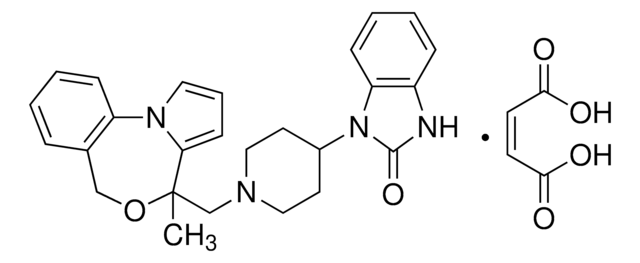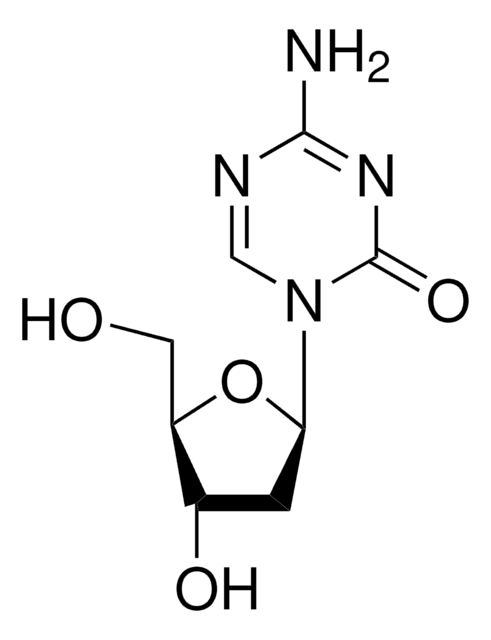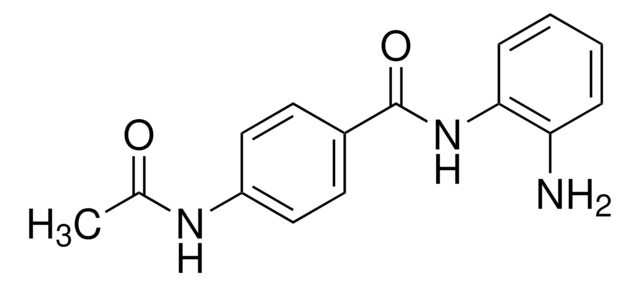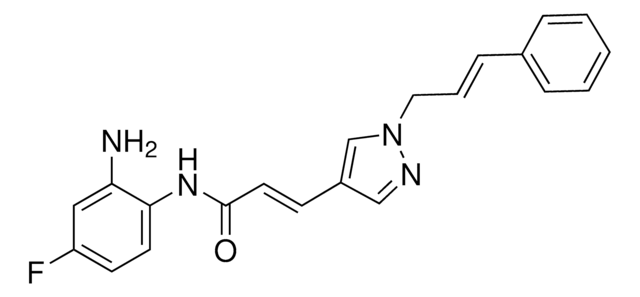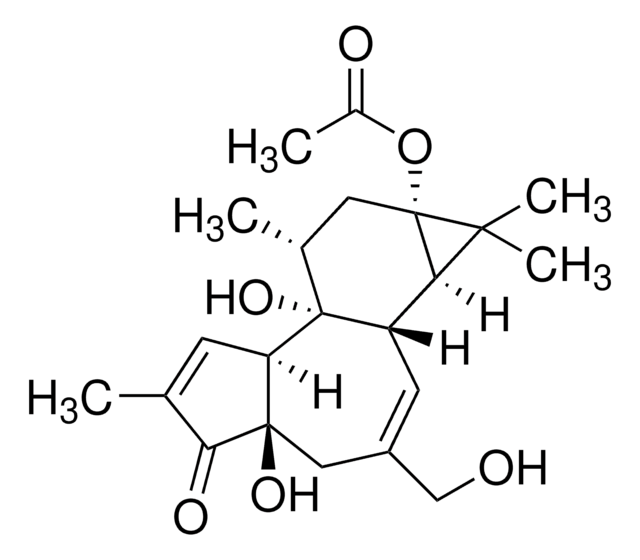SML0061
SAHA
≥98% (HPLC), powder, HDAC inhibitor
Synonym(s):
N-hydroxy-N′-phenyl-octanediamide, Suberoylanilide hydroxamic acid, Vorinostat
About This Item
Recommended Products
Product Name
SAHA, ≥98% (HPLC)
Quality Level
Assay
≥98% (HPLC)
form
powder
color
white to tan
solubility
DMSO: ≥15 mg/mL
shipped in
wet ice
storage temp.
−20°C
SMILES string
ONC(=O)CCCCCCC(=O)Nc1ccccc1
InChI
1S/C14H20N2O3/c17-13(15-12-8-4-3-5-9-12)10-6-1-2-7-11-14(18)16-19/h3-5,8-9,19H,1-2,6-7,10-11H2,(H,15,17)(H,16,18)
InChI key
WAEXFXRVDQXREF-UHFFFAOYSA-N
Gene Information
human ... HDAC1(3065) , HDAC2(3066) , HDAC3(8841) , HDAC6(10013)
Looking for similar products? Visit Product Comparison Guide
Application
Biochem/physiol Actions
Features and Benefits
Signal Word
Danger
Hazard Statements
Precautionary Statements
Hazard Classifications
Muta. 2 - Repr. 1A
Storage Class Code
6.1C - Combustible acute toxic Cat.3 / toxic compounds or compounds which causing chronic effects
WGK
WGK 3
Flash Point(F)
Not applicable
Flash Point(C)
Not applicable
Regulatory Listings
Regulatory Listings are mainly provided for chemical products. Only limited information can be provided here for non-chemical products. No entry means none of the components are listed. It is the user’s obligation to ensure the safe and legal use of the product.
JAN Code
SML0061-25MG:
SML0061-VAR:
SML0061-BULK:
SML0061-5MG:
Choose from one of the most recent versions:
Already Own This Product?
Find documentation for the products that you have recently purchased in the Document Library.
Customers Also Viewed
Articles
We presents an article on Autophagy in Cancer Promotes Therapeutic Resistance
Epigenetic modifications are thought to occur through two key interconnected processes—DNA methylation and the covalent modification of histones.
Our team of scientists has experience in all areas of research including Life Science, Material Science, Chemical Synthesis, Chromatography, Analytical and many others.
Contact Technical Service
